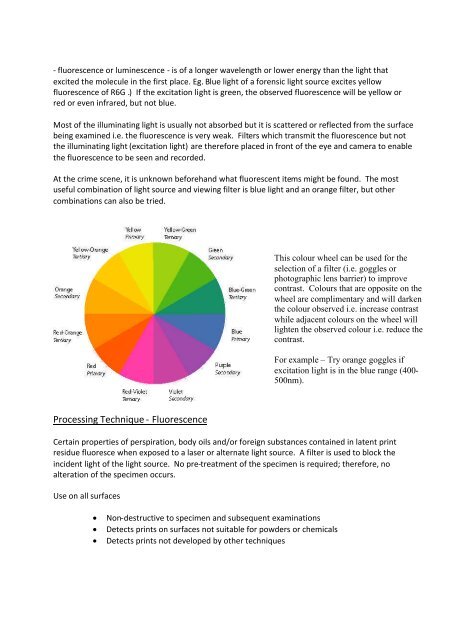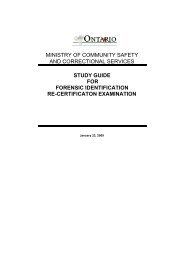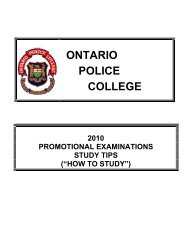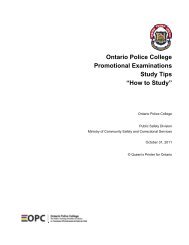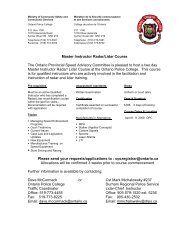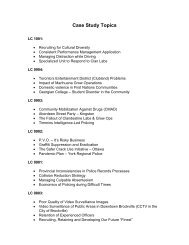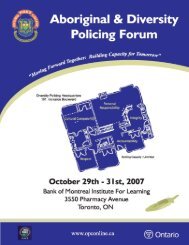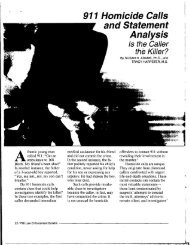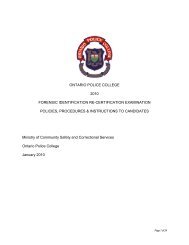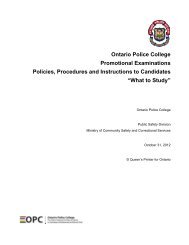General Study Guide - Ontario Police College
General Study Guide - Ontario Police College
General Study Guide - Ontario Police College
Create successful ePaper yourself
Turn your PDF publications into a flip-book with our unique Google optimized e-Paper software.
- fluorescence or luminescence - is of a longer wavelength or lower energy than the light that<br />
excited the molecule in the first place. Eg. Blue light of a forensic light source excites yellow<br />
fluorescence of R6G .) If the excitation light is green, the observed fluorescence will be yellow or<br />
red or even infrared, but not blue.<br />
Most of the illuminating light is usually not absorbed but it is scattered or reflected from the surface<br />
being examined i.e. the fluorescence is very weak. Filters which transmit the fluorescence but not<br />
the illuminating light (excitation light) are therefore placed in front of the eye and camera to enable<br />
the fluorescence to be seen and recorded.<br />
At the crime scene, it is unknown beforehand what fluorescent items might be found. The most<br />
useful combination of light source and viewing filter is blue light and an orange filter, but other<br />
combinations can also be tried.<br />
This colour wheel can be used for the<br />
selection of a filter (i.e. goggles or<br />
photographic lens barrier) to improve<br />
contrast. Colours that are opposite on the<br />
wheel are complimentary and will darken<br />
the colour observed i.e. increase contrast<br />
while adjacent colours on the wheel will<br />
lighten the observed colour i.e. reduce the<br />
contrast.<br />
For example – Try orange goggles if<br />
excitation light is in the blue range (400-<br />
500nm).<br />
Processing Technique - Fluorescence<br />
Certain properties of perspiration, body oils and/or foreign substances contained in latent print<br />
residue fluoresce when exposed to a laser or alternate light source. A filter is used to block the<br />
incident light of the light source. No pre-treatment of the specimen is required; therefore, no<br />
alteration of the specimen occurs.<br />
Use on all surfaces<br />
Non-destructive to specimen and subsequent examinations<br />
Detects prints on surfaces not suitable for powders or chemicals<br />
Detects prints not developed by other techniques


